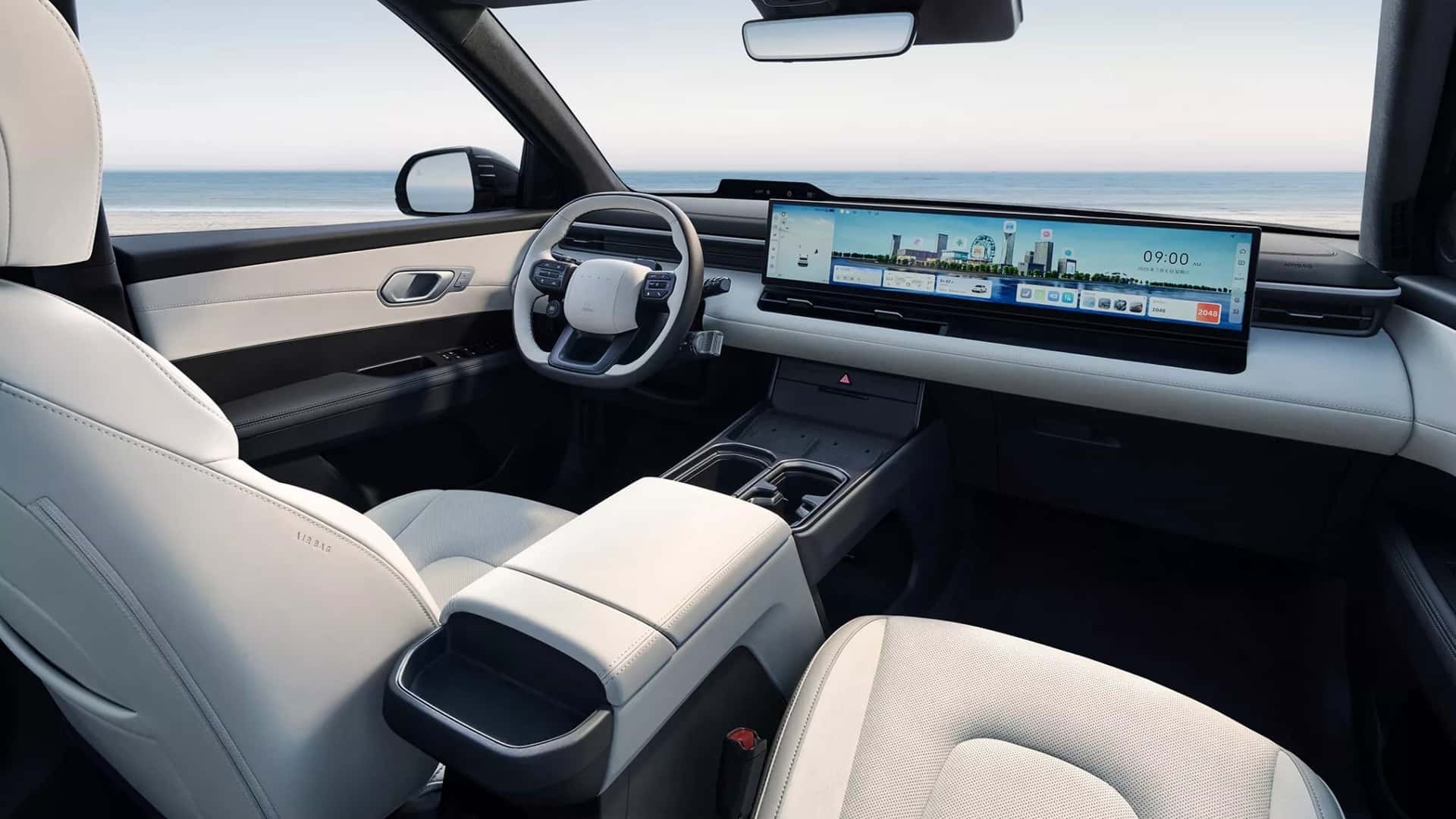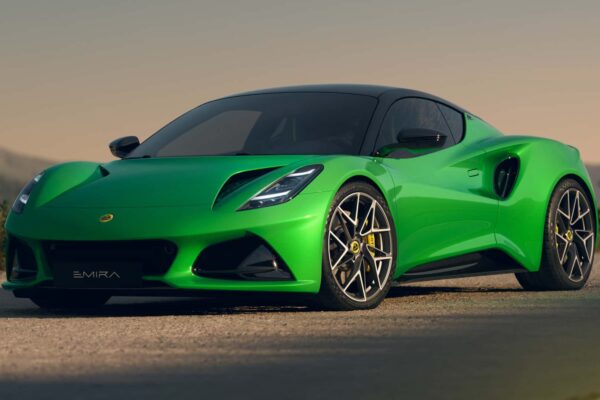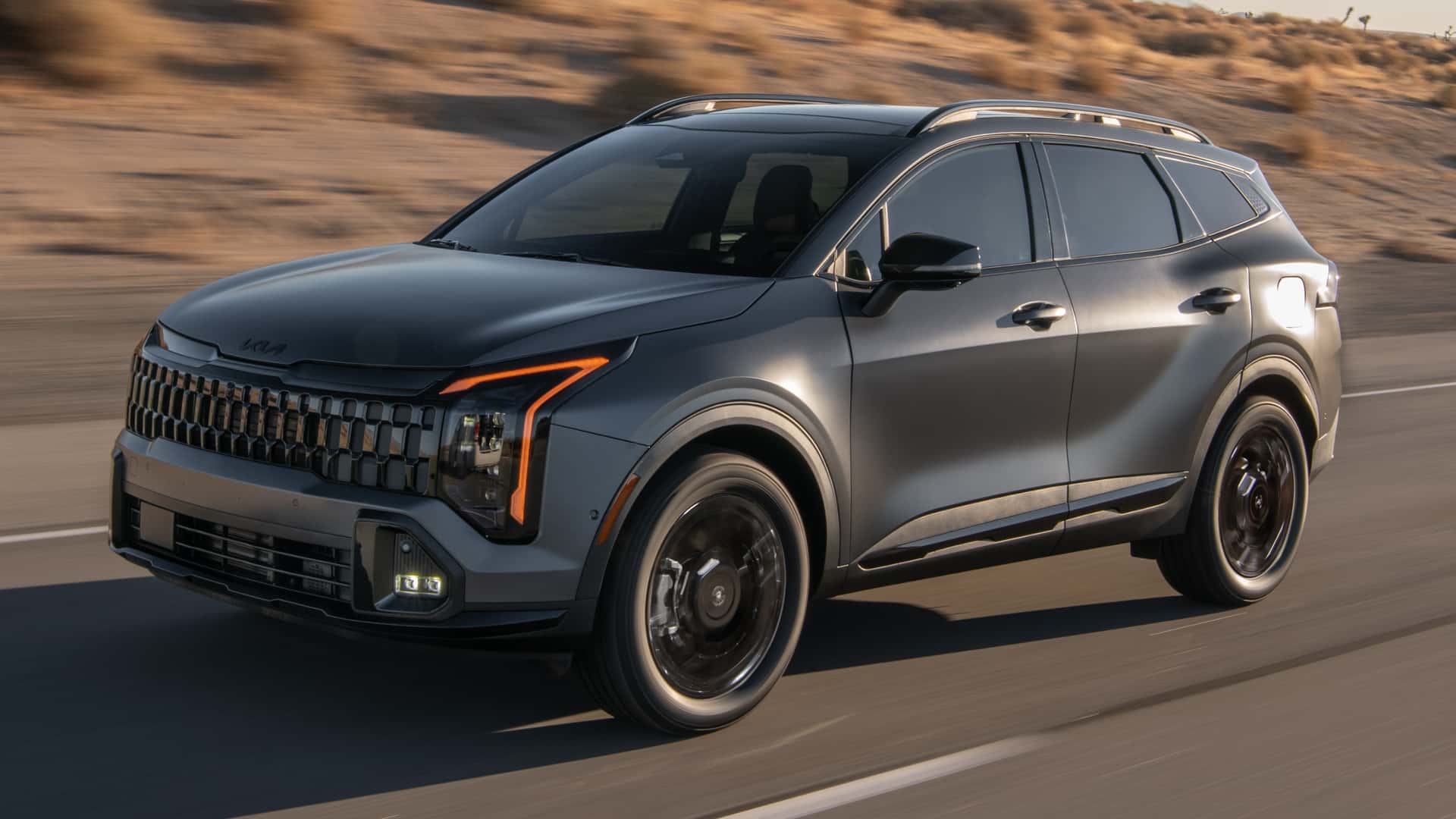I have never hidden my ball on the screens of Jumbo, which swallows the physical buttons and forced drivers to rely on the information and entertainment system even for the simplest jobs. Hyundai has promised to profit this trend, on the pretext that it is similar to adhering to traditional controls installed on the central console. However, its latest electric all -wheel drive vehicles are the opposite of what the Korean auto manufacturer demands in recent years. It is a real screen festival.
Sending a few months ago, Elexio It is the first EV dedicated to the Hyundai specifically designed for China. Five years have passed in the preparation phase, and finally the new official photos reveal the SUV. Beijing Hyundai, the joint venture that was established in 2002 with the Baic engine, was used. Weibo The social media platform for sharing the car’s simplified dashboard photos, dominated by a wide -ranging screen.
Photo by: hyundai
Photo by: hyundai
The huge screen combines 27 inches between the information and entertainment system with a passenger screen, while the driver still gets a separate digital screen in the sight. The removal of the buttons determines the central control unit space, which is now occupied by two wireless charging platforms and four cup carriers. Hyundai He says that there is no less than 29 storage areas scattered throughout the cabin.
The steering wheel is still a healthy number of physical buttons, fortunately, the traditional type instead of the sensitive keys to touch. Traditional controls are also found on the door panel for window and mirror modifications, as well as more buttons on the upper console. Behind the steering wheel three legs, one of which works as a gearpaced.
However, the complete deficiency of the dashboard buttons, regardless of the risk lamps, is surprising, especially given the previous Hyundai phrases. In March 2023, the company’s head, Sangyup Lee, Expresses safety concerns: “When the car drives, it is difficult to control (the touch screen). For this reason, when it is a difficult key, it is easier to feel and feel it.”
By November 2024, North American Vice President Hak Hak Sue admitted Increased frustration with touch control tools:
“Since we add integrated screens (information and entertainment) in our cars, we also tried to put controls that depend on the touch screen, and people did not prefer that. When we tested our focus group, we realized that people feel tension, discomfort and steam when they want to control something in a pinch but they are unable to do this.”
Earlier this year, the first vice president of Simon Lusby’s design called for reliance on screens a “distraction,” He added: “You really don’t want people to look at the screen – you want them to look at the level of the eye.”
Luke Donckerolk, head of the Hyundai Group Design, said this feeling, saying that people “have love for analog interaction”, but he admitted that car makers reduced costs by unifying jobs in a screen: “You can save a lot of tools through the presence of the screen only.”
Why does Elexio contradict all this? It may be summarized in regional preferences. The Volkswagen coach in China, Ralf Brandstätem, recently pointed out that local buyers prefer “AI-FIRST, connected compounds, with smooth sound control and smart cockpits.” In contrast to that, Europeans want the buttons.
“Width =” 16 “Height =” 9 “Loading =” LAZY “/>
Photo by: Honda
The buttons seem to fade quickly in China, as every car appearance recently features a heavy interior design on the screen. An amazing example is Honda GTIt is characterized by a huge number of offers and minimal material controls. Suddenly, the Elexio comparison appears to be restricted by comparison.
But Hyundai’s decision to go to the screen -based facades may not be limited to China. Next Pleos connection systemThe launch in the Q2 2026 will contain a giant preparation similar to the tablet. Hyundai plans to launch more than 20 million cars at the end of a decade. It will be operated on a special operating system derived from Android Automotive (AAOS), providing a smartphone -like interface. Whether any material buttons will survive, but we are skeptical.



